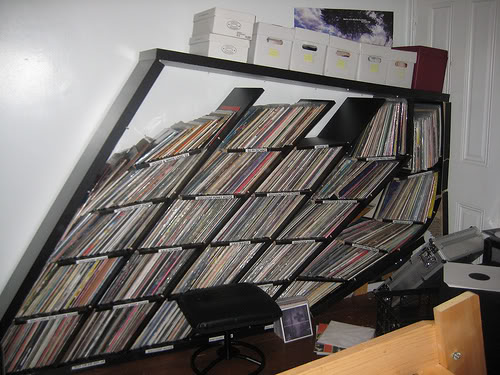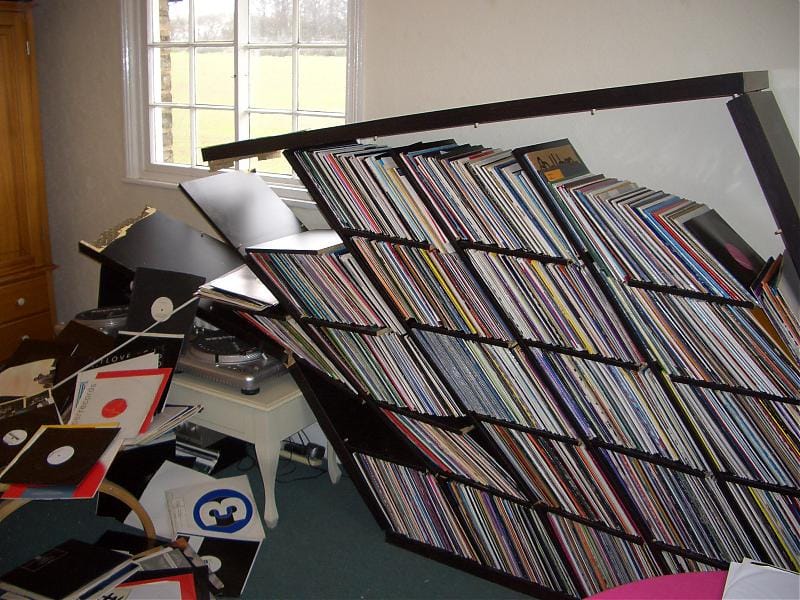clivem2
pfm Member
Yes I have 3 to which I’ve added backs as per my post earlier.Nonsense!
Have you actually owned any?
Nonsense indeed. These are not sturdy structures. Without bracing you’re taking a risk whichever way the shelves are configured.
Yes I have 3 to which I’ve added backs as per my post earlier.Nonsense!
Have you actually owned any?
Built the wrong way round.
It makes a lot of difference, the right way the vertical dividers are in compression from the weight on the shelves. the wrong way the only thing supporting the weight on the shelves are 4 6mm dowels used to locate them.I doubt that rotating the shelves 90 degrees makes much difference aside from where they break. The weight is enormous for such flimsy shelves. Bracing the rear is what’s needed.
In terms of a single shelf issue then yes. In terms of shear then not really. The lower parts are under far greater compression than the upper ones. Shear will still be very possible. Rather than play with minor differences shear is far better prevented by one of the several methods to reinforce the back.It makes a lot of difference, the right way the vertical dividers are in compression from the weight on the shelves. the wrong way the only thing supporting the weight on the shelves are 4 6mm dowels used to locate them.
Pete
Minor differences! Major structural differences more like.In terms of a single shelf issue then yes. In terms of shear then not really. The lower parts are under far greater compression than the upper ones. Shear will still be very possible. Rather than play with minor differences shear is far better prevented by one of the several methods to reinforce the back.
Mine are built the correct way. Even so they were still very unsuitable for taking weight from being full with records. The greatest major structural issue is taken care of with bracing. Unless the sides of the shelving units have support from something like an alcove there is risk. All it could take is someone to bump into a side...likely after a beverage or two. Heaven forbid that a child might be crushed.Minor differences! Major structural differences more like.
Pete
I suspect the collapse there is because the Kallax is incorrectly oriented. Both photos show that the long shelves are vertical which incorrectly loads the shelves. The incorrect configuration also exposes the weaknesses of the corners to a horizontal force. It also looks like both units have been subject to a sudden lateral force to collapse them. I don't add bracing as there is nothing substantial to screw into.You've got walls on both ends preventing any shear! If things went south they might slant to the side a few inches!
If you didn't have those walls on both sides you'd want to think twice about storing such precious items on them.


Take a look at how many shelves are constructed. There’s usually a backing tacked onto the rear or fitted into slots. Lots of tacks (if no slots). Screws would not be my choice either, not without a better understanding of the internal structure though there does looks to be chipboard along the edges. I used heavy duty staples - again a lot of them. The shelves are not going to collapse due to shear. Btw my shelves are white so I painted the backing (3.6mm ply) white.I suspect the collapse there is because the Kallax is incorrectly oriented. Both photos show that the long shelves are vertical which incorrectly loads the shelves. The incorrect configuration also exposes the weaknesses of the corners to a horizontal force. It also looks like both units have been subject to a sudden lateral force to collapse them. I don't add bracing as there is nothing substantial to screw into.
I would install flat L brackets on the back corners. Maybe steel brackets 20cm x 20cm, 5cm wide, 3mm thick. 5cm screws (pre-drilled holes). Since the L braces would be out of sight you might as well over-spec it. This is what I'd do.After much thought I have decided I need something a bit higher to make operating the tape deck easier. I spent all of yesterday trawling eBay for a table with the ideal proportions and found only one. This would be ideal as it's wide enough to accept an another audio component 'inside' the table.
The only potential issue is the table's construction. I emailed the seller to ask if it had any wooden bracing across the corners, but it doesn't, the joints are simply glued. Apart from nailing a back onto the unit, what would be the easiest and/or most effective way to strengthen its ability to withstand horizontal nudges?
Sounds like a plan!I would install flat L brackets on the back corners. Maybe steel brackets 20cm x 20cm, 5cm wide, 3mm thick. 5cm screws (pre-drilled holes). Since the L braces would be out of sight you might as well over-spec it. This is what I'd do.
You can't tell what the internal structure is like. The close up photos show the finished faces covered in several mm thick sheets of veneer. So I'd supplement the flat L braces with some of the bent kind underneath, 2 per side. The kind I mentioned above that do nothing for shear. These could help prevent the legs from separating from the top in case the internal connection is actually a mitered joint.
